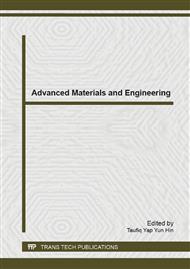p.363
p.368
p.374
p.379
p.383
p.388
p.392
p.396
p.400
The Experiment Research on Storage Characteristic of PCM Storage Device by Spheres Piled Encapsulated for Vehicle Waste Heat
Abstract:
For the thermal environment and the warming requirement of Vehicle, carry out experiment study on heat storage characteristic of phase change materials (PCM) encapsulated by Spherical stack. heat storage and release experiment process , changing factors such as medium flow rate and melting point which impact on PCM heat transfer characteristics , melting rate and response time have been analyzed. The results show that within the scope of experiment high medium flow rate is conducive to promote PCM melting rate and heat storage. In the experiments process, high melting point of PCM storage heat grade is high, but the low melting point of PCM is more suitable for vehicle motor, batteries in low temperature waste heat recovery. At the same time, multi-melting point PCM storage device with spheres piled encapsulated delamination mixed stowage was better satisfy the different condition of waste heat recovery and utilization than single melting point of PCM.
Info:
Periodical:
Pages:
383-387
Citation:
Online since:
June 2014
Authors:
Price:
Сopyright:
© 2014 Trans Tech Publications Ltd. All Rights Reserved
Share:
Citation:


